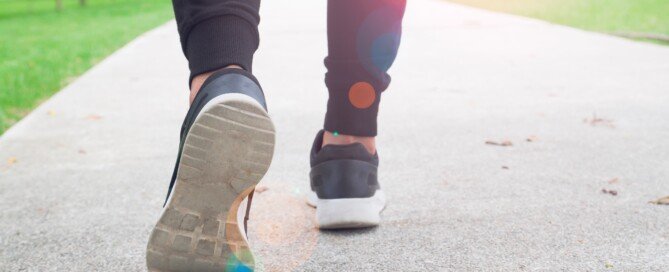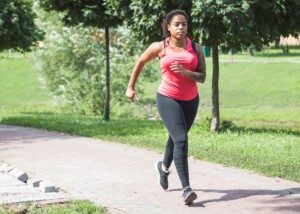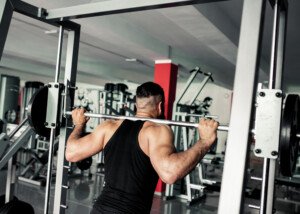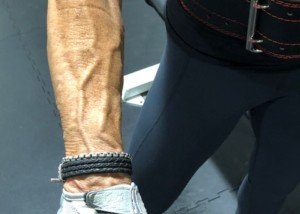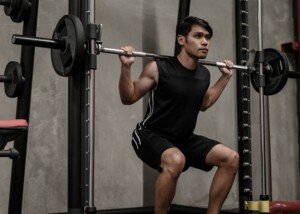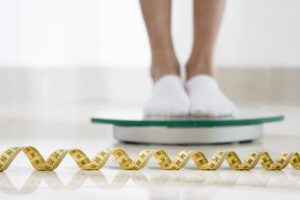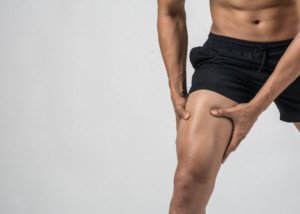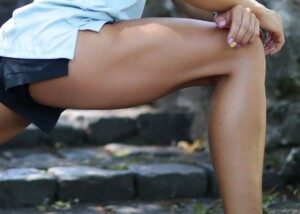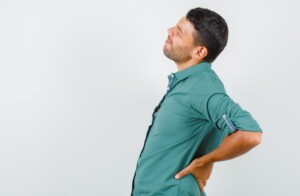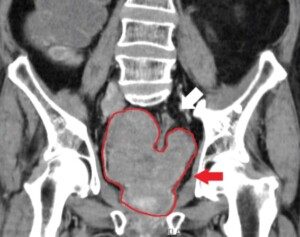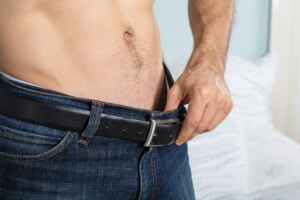How Much Weight Can You Lose by Walking After Dinner?
Are you trying to lose weight by taking medium or even brisk paced walks after dinner?
How well is this working for your weight loss goals? If not much weight is coming off, here are the reasons. (more…)
Should Women Over 50 Do Barbell Hip Thrusts? Yes! How To
Women over 50 can get a fitter, firmer, rounder behind, along with a stronger core and legs, by doing barbell hip thrusts. Sharon Smith, 71, demonstrates.
Five Weight Loss “Tricks” that Will Fail You
If you’re relying on any of these five weight loss “tricks” to get rid of your stubborn fat, you will be very disappointed because they DON’T work.
Does Being on One’s Feet 8 Hours a Day Replace Aerobic Exercise?

Are you on your feet eight hours a day at work and wonder if this can replace aerobic or resistance exercise?
Do you feel “exhausted” after your shift and wonder if this means your heart gets a good workout at the workplace? (more…)
The Numbers You Should Know for Heart Disease Prevention
Here are the important numbers you should know as part of your mission to prevent developing heart disease or having a stroke.
How well do you know what your numbers should be?
- Blood pressure
- Lipid profile (which includes cholesterol)
- BMI (body mass index)
- Fasting glucose
Why should you know what your numbers should be?
“Because these numbers are markers for heart attack, stroke, early death and disability,” says Richard Honaker, MD, Chief Medical Advisor at Your Doctors Online, with 30+ years’ experience as a primary care physician.
The prevention of heart disease and stroke begins with knowing what the numbers should be for various tests.
Blood Pressure
- This should be 120/80 Hg or lower.
- For diabetics or those with kidney disease, it should be 130/80 or lower.
- Never take blood pressure after just “running around” doing chores or being busy. Sit quietly for 10 minutes first. Blood pressure readings at doctors’ offices tend to be higher than from home tests due to anxiety.
Lipid Profile
LDL (bad) cholesterol should be less than 100 mg/dL for typical people, and less than 70 for those with heart disease or at high risk for heart disease. Being at risk for heart disease also means you’re at risk for stroke.
Fasting triglycerides should be under 150 mg/dL.
HDL (good) cholesterol should be at a minimum, 40 mg/dL, for men, and 50 for women. Total cholesterol divided by HDL should be 3.0 or less.
C-reactive protein (high sensitivity) should be less than 1.0 mg/dL. This test is not part of the routine physical and is given only when the physician believes there’s a need for it.
BMI (body mass index)
BMI should be 24 or under. Twenty-five to 29 is overweight, and 30 and over is obese.
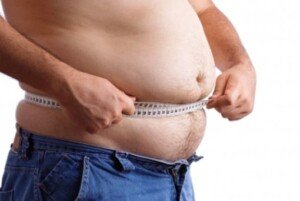
Fj.toloza992, CC BY-SA
A person who is very muscular, such as a bodybuilder, may have a BMI over 25, since BMI is based on a height and weight calculation.
Thus, a 5-9 bodybuilder may weigh 200 pounds, but have only 8 percent body fat, yet his BMI number will be in the overweight range.

Fasting Sugar
Fasting blood glucose should be 99 mg/dL or less. If it’s 100-125 mg/dL, this may signal prediabetes.
The word “may” is used because more than one reading over a six-month period is required for a more definitive conclusion.
Plus, a doctor may order additional tests such as a glucose tolerance test, to get a more definitive assessment.
Knowing these numbers is part of your arsenal to prevent heart disease and stroke.
 Dr. Honaker has been recognized by D Magazine as one of the Best Doctors in Dallas several times and a Texas Super Doctor by Texas Weekly. He’s also a recipient of the Physician Recognition Award from the American Medical Association multiple times. Your Doctors Online
Dr. Honaker has been recognized by D Magazine as one of the Best Doctors in Dallas several times and a Texas Super Doctor by Texas Weekly. He’s also a recipient of the Physician Recognition Award from the American Medical Association multiple times. Your Doctors Online
 Lorra Garrick has been covering medical, fitness and cybersecurity topics for many years, having written thousands of articles for print magazines and websites, including as a ghostwriter. She’s also a former ACE-certified personal trainer.
Lorra Garrick has been covering medical, fitness and cybersecurity topics for many years, having written thousands of articles for print magazines and websites, including as a ghostwriter. She’s also a former ACE-certified personal trainer.
.
Sources: heart.arizona.edu/ sciencedaily.com/releases/2010/05/100505091632.htm
Four Basic Routines to Burn Stubborn Fat All Over
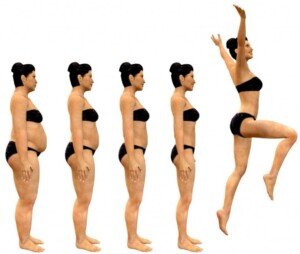
The fat won’t come off, right? No matter what you do, the scale won’t budge.
But don’t despair, because you’re probably NOT doing the very four routines that’ll kick that blubber clear to the curb. (more…)
Brilliant Hack for Home Hamstring Exercise: Discovered by Accident!
Here is an absolutely brilliant hack for home hamstring strength training that I discovered by accident while doing chest presses at home. (more…)
Getting Rid of Gallstones: Diet vs. Surgery

A doctor compares diet vs. surgery for getting rid of painful gallstones.
For someone diagnosed with gallstones, it’s easy to wonder about how effective a certain diet would be.
Could the right diet pass gallstones? Is surgery for gallstones always the best treatment?
I know a 50-something man who was experiencing severe sharp stomach pains and was diagnosed with a gallstone.
He consulted with a naturopathic physician to see if a special diet would make the gallstone pass.
The diet forbids white sugar and processed foods. Almost immediately the symptoms disappeared.
He’s been symptom free for many months, but a second scan showed that the gallstone was still there.
Should he have surgery?
“Decision for surgery is complex; pain is not the only indicator,” says Dr. Maurice A. Ramirez, DO, board certified in family practice and also clinical nutrition, formerly with Florida Hospital Ormond and now retired.
Dr. Ramirez continues, “The stone can become the nidus of an infection and/or cause an obstruction.”
What if there’s no longer any pain as a result of a dietary approach? Would it be okay to leave the gallstone in?
No, because, as already mentioned, the presence of the stone could lead to an infection or an obstruction.
What about surgery for those people whose painless gallstones were discovered incidentally while undergoing imaging for an unrelated matter?
“No, stones that are found incidentally and have never caused pain, fever, swelling, obstruction, jaundice or infection may be observed until one of these warning signs occur,” says Dr. Ramirez.
The Potential Danger of Gallstones
Dr. Ramirez explains, “Once incidental stones (cholelithiasis) become symptomatic disease (cholecystitis), the risk of life threatening infection, gangrene and death depend on whether there is obstruction (blockage) of the gallbladder. If obstruction occurs, the risk of death is high.”
Clean Diet vs. Going Under the Knife
Dr. Ramirez says that a change in diet — even the most healthful diet — is not as effective or as safe as surgical removal of the gallstone if there’s an obstruction or infection.
However, a dietary approach (whole foods, low saturated fat, low cholesterol, limited processed sugars) is “acceptable in the absence of obstruction or infection,” says Dr. Ramirez.
Should the patient first try diet to rid symptoms?
“Acceptable in the absence of obstruction or infection, but not a first choice for treatment,” says Dr. Ramirez.
If you have any of the following symptoms, ask your doctor about the possibility of gallbladder disease:
- Upper abdominal pain, especially on the right
- Nausea/vomiting
- Fever
- Night sweats
- Tea colored urine
- Oddly light colored bowel movements
- Jaundice (yellowish skin)
- Unexplained fatigue
- Unexplained weight loss
- Suppressed appetite
 Dr. Maurice A. Ramirez’s book, “The Complete Idiot’s Guide to Disaster Preparedness,” is now available everywhere.
Dr. Maurice A. Ramirez’s book, “The Complete Idiot’s Guide to Disaster Preparedness,” is now available everywhere.
 Lorra Garrick has been covering medical, fitness and cybersecurity topics for many years, having written thousands of articles for print magazines and websites, including as a ghostwriter. She’s also a former ACE-certified personal trainer.
Lorra Garrick has been covering medical, fitness and cybersecurity topics for many years, having written thousands of articles for print magazines and websites, including as a ghostwriter. She’s also a former ACE-certified personal trainer.
.
Top image: Shutterstock/Burlingham
Young Child Vomiting Only at Night: Cause & Treatment

If your young child upchucks only overnight, the likely cause will really surprise you.
“If your preschooler vomits only at night, my first thought as a pediatrician would be that it is a behavioral issue,” says Joel Gator Warsh, MD, of Integrative Pediatrics and Medicine, Studio City, CA, and part of the pediatric staff of Cedars-Sinai Hospital.
Dr. Warsh continues, “One of a preschooler’s major drives is attention. Does your child want to go to sleep? Are they fighting you every night?”
This makes a lot of sense. After all, even though you may not be a doctor, you have to admit that it’s unlikely that any medical condition would cause vomiting ONLY at night or overnight.
Though many conditions can cause vomiting overnight, there’d also be upchucking during the day as well.
Plus, your child would have other symptoms such as nausea, stomach pain, loss of appetite. They’d seem sick.
“If your child vomited in the past because they worked themselves up, crying going to bed or were sick with a stomach bug, they probably got a lot of attention,” explains Dr. Warsh.
“They realized they received a lot of comfort and parental time for this, and the behavior continued happening.
“The most important thing to consider in this case, like any sleep training, is to not give too much attention to the issue.
“If they vomit, keep the lights dim, do not interact, change the sheets and put them straight back to bed. Positively reinforce nights without vomiting.”
But CAN it be a medical condition?
Dr. Warsh says, “Something else to consider would be reflux. When you lie down, gravity is not working with you, and stomach contents are more likely to reflux from the stomach into the esophagus.
“If this is a concern, start by restricting any liquids one hour before bed and see if this helps.
“Do not feed them any late night snacks, and if you give them anything after dinner, make sure it does not inflame the gut. No sugar, dyes or preservatives.”
Keep in mind that acid reflux that comes out of the mouth is not the same mechanical dynamic as vomiting, even though the fluid-like gunk may look like vomitus.
If possible, prop your preschooler’s bed up on the head side by 15 degrees to help offset the effect of gravity.
 Dr. Warsh and his Studio City, Los Angeles clinic treat a wide array of common pediatric issues using holistic and conventional treatments. He works with nutritionists, naturopaths, Ayurvedic practitioners, acupuncturists and more.
Dr. Warsh and his Studio City, Los Angeles clinic treat a wide array of common pediatric issues using holistic and conventional treatments. He works with nutritionists, naturopaths, Ayurvedic practitioners, acupuncturists and more.
 Lorra Garrick has been covering medical, fitness and cybersecurity topics for many years, having written thousands of articles for print magazines and websites, including as a ghostwriter. She’s also a former ACE-certified personal trainer.
Lorra Garrick has been covering medical, fitness and cybersecurity topics for many years, having written thousands of articles for print magazines and websites, including as a ghostwriter. She’s also a former ACE-certified personal trainer.
Why Isn’t Obstructive Sleep Apnea Part of an Annual Physical?


